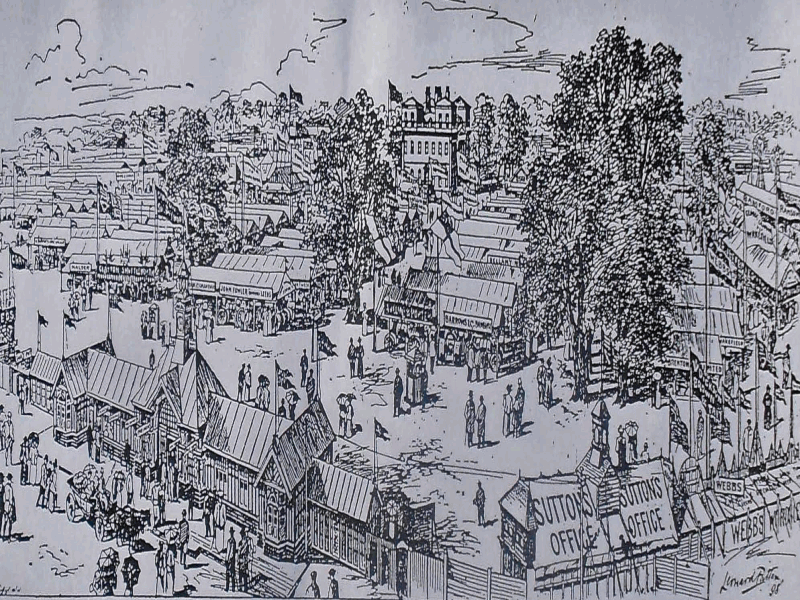Wednesday 22nd June 1898 was bright and sunny, and the railway station at Sutton looked a picture. Over a hundred and fifty ladies and gentlemen were waiting on the platform dressed in their finery, a carpet had been laid along the inclined corridor which was decked with flowers. Punctually at 12.30 the Royal Train arrived, consisting of two saloon carriages and three coaches, and the Prince of Wales alighted.
The Prince of Wales had come to see the Royal Agricultural Show, which was being held in Four Oaks Park, and this being an official visit, all the local notables were gathered to receive him; Alderman Crockford, the Mayor of Sutton, was introduced to him on the platform along with Captain Brinkley the Chief Constable and Mr. Crutchley the director of the Royal Show. Waiting in the station yard was an open carriage “drawn by a pair of magnificent black horses”; when the Prince and his equerries were seated it passed into High Street where there were large crowds of cheering people. The carriage was escorted by four mounted police, two in front and two behind, and followed by two more carriages carrying the Lord Mayor of Birmingham and the Mayor of Sutton.
The party arrived at the showground entrance in Bracebridge Road at 12.40 and drove up the central avenue to Four Oaks Hall, where the officers and members of the town council were gathered on the steps. After admiring the cattle show and seeing the work of the model dairy Earl Spencer, the President of the Society, entertained the prince to lunch in Four Oaks Hall; though the hall had been standing empty for many years, great pains had been taken to decorate it and fill it with flowers for the occasion. The band played, and crowds gathered outside.
Afterwards the prince went to the royal box in the grandstand of the former racecourse where over 10,000 people watched the parade of light horses. After a visit to the implements stands, he returned to the hall for a short rest. Then it was time to go, and his carriage was cheered all the way back to the station by enthusiastic crowds. The public were not allowed into the station as the Royal Train departed at five o’clock in a sudden thunderstorm.
The organisers were pleased with the attendance at the show, 22,317; Monday, Tuesday and Wednesday were for serious agriculturalists, Thursday and Friday were billed as popular days ( no doubt tickets were cheaper), with nearly fifty thousand people paying to go in. This was the final flourish for Four Oaks Hall and the old racecourse, all traces of them had disappeared by 1900.
